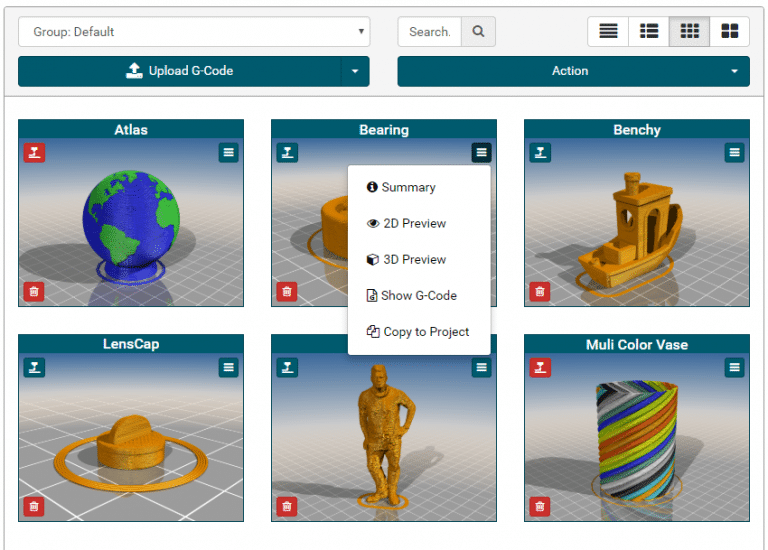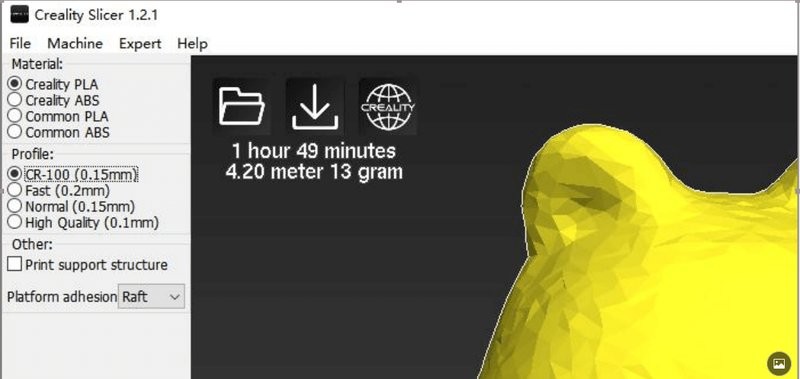
- #Ender 5 configuation file for repetier server install#
- #Ender 5 configuation file for repetier server software#
- #Ender 5 configuation file for repetier server code#
#Ender 5 configuation file for repetier server code#
In this tab you can define the code segments that get inserted at the start, the end and before and after an extruder switch. You need to set them in the “G-Codes” tab. Some settings are always taken from the Printer Settings -> Extruder.ĬuraEngine does not handle temperatures. This greatly reduces the number of configurations you need. For sliching you select the quality you want. In the quality group, you can define several passible layer heights, that work with this print configuration.

This allows you a fast change between quality and speed. With the speed slider in the CuraEncgine slicer tab you interpolate between these values. You can enter two speed values per parameter. You can deactivate this function at Config -> Preferences -> Basic Settings -> Show Help Bubbles. By clicking into a parameter field or by hovering a field, a helb bubble will show up with detailed informations about this parameter. To add a new configuration, simply save the current settings with the “Save as …” button. The second part are filament settings, which contain parameters influenced by the filament selection. The biggest part are the print settings, these are subdivided into five tabs. The configuration is split into two main parts. To define the parameters behind your configuration, click the “Configuration” button to enter the setup. Here you select your predefined configurations to use plus some important settings.

To use it, you normally only need the right tab with the quick settings.
#Ender 5 configuation file for repetier server software#
There you only have to push the “Load” button on the right side to load the g-code.ĬuraEngine is an external slicer software which is bundled with the host. If a new file appears or is newer, it will be shown in the status column. Every time the host window gets the focus, the content of the directory is checked. The directory itself can be selected in the slicer tab. Please remember to separate different file types with semicolon. In the setup you select the file types to watch for, e.g. The watch directory will help you to import new files faster. If you use an external slicer, it normally requires quite some clicks to import the generated g-code into the host. In this case you can leave the fields empty. For Linux it will also look into the default paths, if the package is installed. If you leave the fields empty, the host uses the bundled versions. The windows installer already installs and sets python and pypy. If you leave it empty, the python interpreter is used instead.
#Ender 5 configuation file for repetier server install#
For 3 to 4 times faster slicing times you should also install pypy and select the executable. Skeinforge is written in python and requires python 2.7 to run. You need to select the profiles subdirectory in it. Skeinforge creates this directory in your home directory with the name. If you haven’t started Skeinforge before, this directory will not exist.

The profiles directory is, where Skeinforge stores the defined slicing profiles. This directory defines where the profiles are stored. If you use SFACT instead of Skeinforge, you need to define a working directory. This is the program that does the slicing. The second one is the workhorse called skeinforge_craft.py. You will only use it to define your slicing profiles. It will show all profiles and also allows to slice objects. Skeinforgeįor Skeinforge two programs are needed. You need to select a slicer with version 0.9.0 or higher to work with the host. 🙂 Only if the host does not find the profiles or you want to use a different version, select the configuration directory or the slicer.


 0 kommentar(er)
0 kommentar(er)
